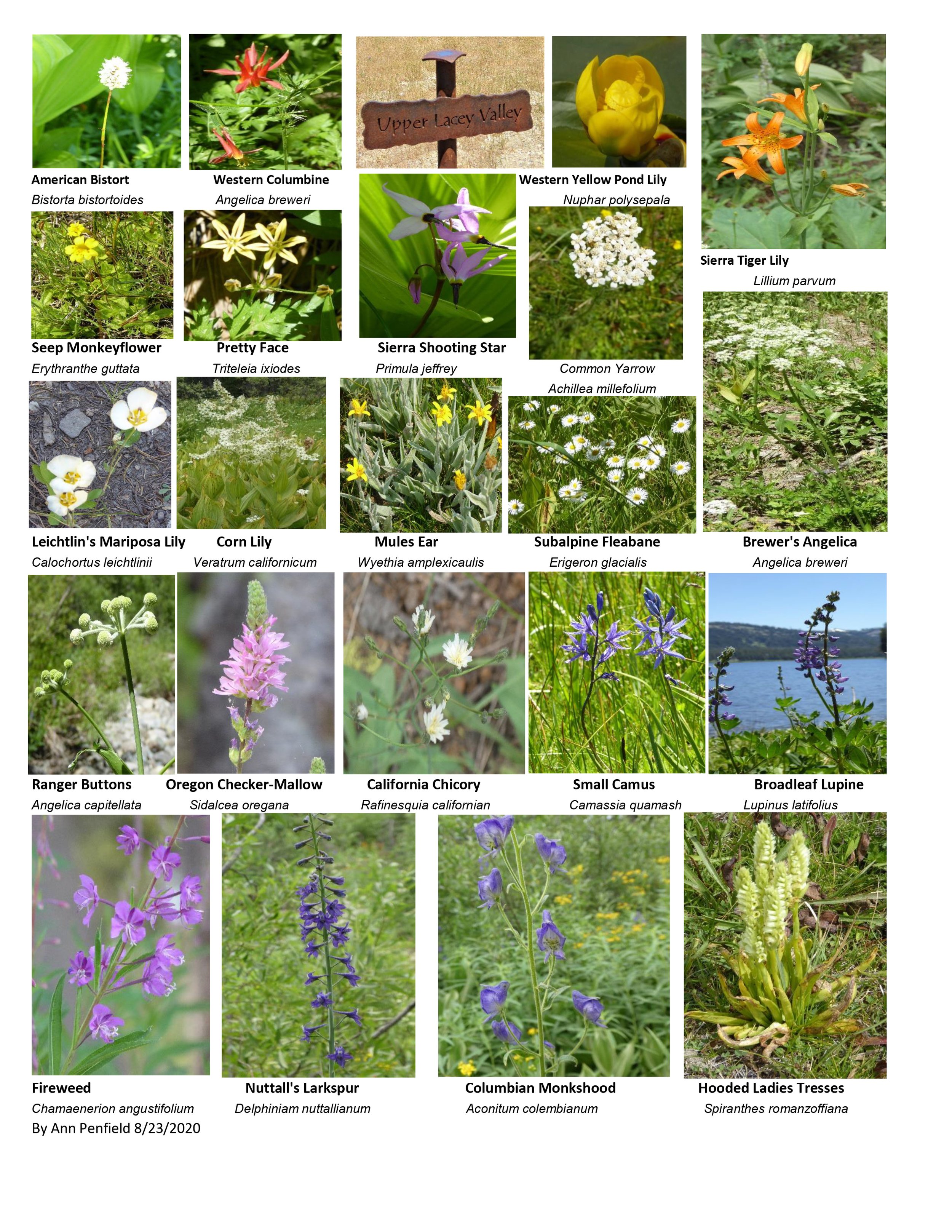Protect and Enjoy: Wildflowers on Land Trust Lands
Every season in our corner of the Sierra Nevada puts on its own unique show, but wildflower season stands apart with new splashes of color lighting up Land Trust lands over the course of the spring and summer months.
Camas lilies in Lower Carpenter Valley, photo by Bill Stevenson.
Thanks to differing elevations, ecosystems, microclimates and sun exposure, the opportunity to find wildflowers on conserved properties lingers longer than in many other places when you know when and where to look.
“Wildflowers in our area are fantastically diverse with the Pacific Slope and Great Basin regions slamming together, along with relics from the boreal forests dating back to the retreating glaciers,” said Will Richardson, Executive Director for Tahoe Institute for Natural Science. “Add in the complexity of the mountains as a three-dimensional space, open meadows and tucked away gullies, cold air sinks and north facing slopes, you get the whole mix.”
One Land Trust property of particular splendor is Lower Carpenter Valley, protected in partnership with The Nature Conservancy and Trust for Public Land as part of the Northern Sierra Partnership in 2017. David Edelson, recently retired as the Sierra Nevada Project Coordinator from The Nature Conservancy, holds that land in a special place.
“At a rough guess, if you went into Lower Carpenter Valley at any point in wildflower season, you could probably find 40 or 50 different species,” Edelson said. “It has an exceptional abundance of diversity, due to the different habitats from wet meadows, dry meadows, fens, and the springs coming down the slopes.”
Lower Carpenter Valley is known for its camas lilies, but Edelson also particularly enjoys finding the bright orange tiger lilies, white Sierra bog orchids, and purple monk hood flowers there.
Sierra tiger lily and monkshood, photos by David Edelson.
For Ann Penfield, one of the Land Trust’s volunteer hike docents who has created wildflower guides for some of the Land Trust lands, Lacey Meadow above Webber Lake is another favorite spot.
“I always thought Lacey Meadow was a good name because the wildflowers out there look very lacy,” Penfield said. “We like to go with kayaks so that wildflowers are right at eye level – you can even look up underneath some of the wildflowers that way.”
Ann Penfield’s flower guide for Lacey Meadow, click to enlarge.
Other great Land Trust lands to visit for wildflowers include Elizabethtown Meadows earlier in the summer, Perazzo Meadows, Royal Gorge later in the summer (Bogus Basin in particular), and Johnson Canyon.
For those interested in learning more about wildflowers and identifying them in some of their favorite places or on their favorite trail, the diversity can be daunting. Fortunately, one way to start learning this year is Tahoe Institute for Natural Science’s Wildflower Big Year.
“We are celebrating the diversity of plants around here, and trying to get people enthusiastic about it,” Richardson said. “We’ll have wildflower outings, give people the ability to challenge themselves to see as many flowers as they can, workshops, photography, sketching, talks, and more.”
Beyond getting people engaged, the Wildflower Big Year can create meaningful data for scientists, Richardson said, with the last one in 2019 resulting in more than 13,000 observations of more than 1,000 species in the Tahoe-Truckee area. Learn more and get involved here.
“Getting to know our wildflowers makes you really aware of the treasures we have here, how they fit in with the whole environment,” Penfield said. “Every day is a new surprise with these flowers when you get into it.”
The wildflowers on our preserves are more than just beautiful, however, playing a vital role for all of the wildlife we’ve all worked so hard to protect.
“They’re an important part of the whole cycle of life, particularly for pollinators like bees, butterflies, and hummingbirds,” Edelson said. “You need to have healthy native plants to support the whole ecosystem.”
The Land Trust’s focus on rare or important ecological areas has been of particular benefit to wildflowers, Richardson said, with emphasis on waterways, meadows, and maintaining habitat connectivity.
“As more and more wild places get developed it is so important that we conserve and restore what we have,” Edelson said. “I’m really proud of the work we’ve done, the iconic and spectacular places we’ve helped protect.”



